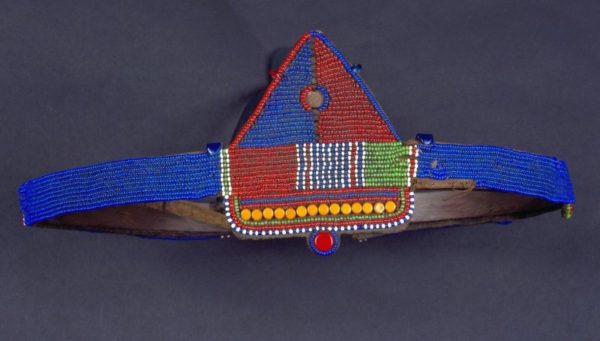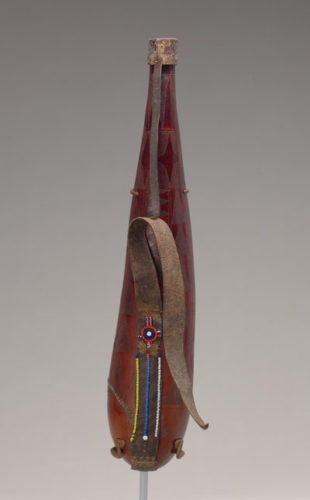PBS: Escaping Eritrea … [Read More...] about ካብ ውሽጢ ቤት ማእሰርታት ኤርትራ
When You’re A Nomad, You Need Portable Art
Diane Cole |
Think of it as art to go — and on the go.

That’s the theme for the exhibition “Designs for Mobile Living: Art from Eastern Africa” at the Baltimore Museum of Art. There are a mere 28 objects, ranging from brightly decorated shields and glass-beaded belts for carrying spears to finely crafted necklaces and painstakingly carved drinking vessels. But individually and together the objects demonstrate how nomadic cultures in the region of the Great Rift Valley, where Kenya borders Tanzania, imbue even the most functional objects with artistic style and cultural identity.
In cultures that tend to livestock, like the Maasai, Samburu, Somali and Turkana groups represented here, “everyone is in motion,” says exhibition organizer Kevin Tervala. And every possession must be carried along as they go with their animals from place to place.
Heavy or unwieldy art objects — like an enormous brass abstract sculpture he points to in a neighboring gallery — would be impractical in their culture, Tervala says. Instead, he says, “creative drives translate into what people wear, what they use.”
“Even the most humble object,” he says, like a cradle-shaped, curved bowl, has been carefully carved and is attached to a leather strap to carry easily over the shoulder. A shield fashioned out of the wrinkled, rippled hide of a rhinoceros shows an appreciation of texture — and also proclaims the warrior status of the man who wielded it: Although the hides of camel, goat and cow could also be used, hippos and rhinos are harder to kill. In the example in the exhibit, you can also see the tiny holes where spears hit and pricked the surface.
The names of the artists are not known, nor for the most part are the exact years from which each work dates. But the materials, colors and patterns suggest a general timeline approximating when they were made, in what geographical area and by what group.

For instance, before Europeans arrived to colonize and proselytize in the 19th century, most objects were monochromatic or used muted colors from vegetable dyes. That changed when the Europeans came, bringing glass beads in many colors. “That helped artistic possibilities to take off,” says Tervala.

Belts, jewelry, clothing and other items began to burst with colorful beaded patterns. By the 20th century, each group favored its own color combinations and shapes and developed its own “look” to stand out, says Tervala.
Turkana jewelry, for example, is decorated with solid blocks of red, white and blue beads. By contrast, Maasai objects use red, white, blue, orange and green glass beads arranged in triangles, rectangles and pie-chart shapes. There’s no missing the Western influence in a Maasai bracelet designed in the shape of a wristwatch.
Know the clues to look for, and you could even decipher a woman’s marital status. Samburu wives wear necklaces featuring a vertical row of red glass beads strung with a giraffe’s tail. A necklace worn by a Turkana married woman is altogether different, featuring three dangling bull’s-eye-shaped pendants in alternating color patterns. The absence of extensive beadwork suggests the object has come from a more northern area, where there was less exposure to European trade, and more traditional decorative methods remained dominant.
Nineteen of the 28 items on display come from the museum, the others from a private collector. Most are being shown in public for the first time, says Tervala, who is pursuing a Ph.D. in African studies and art history at Harvard. Focusing on the art and design, not just the purpose, of the objects highlights the diversity of African art, he says. It helps you see “there is art in everything.”
